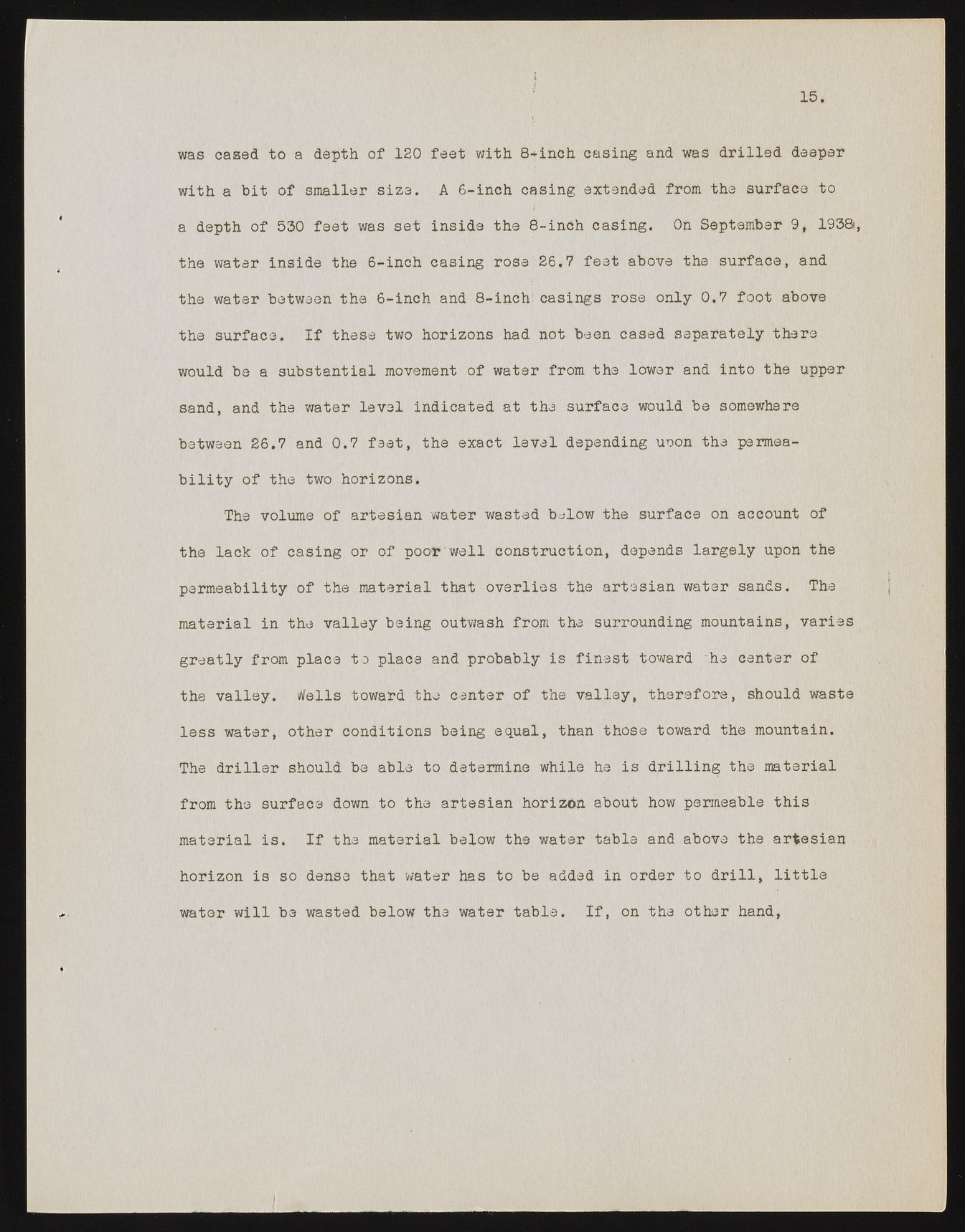Copyright & Fair-use Agreement
UNLV Special Collections provides copies of materials to facilitate private study, scholarship, or research. Material not in the public domain may be used according to fair use of copyrighted materials as defined by copyright law. Please cite us.
Please note that UNLV may not own the copyright to these materials and cannot provide permission to publish or distribute materials when UNLV is not the copyright holder. The user is solely responsible for determining the copyright status of materials and obtaining permission to use material from the copyright holder and for determining whether any permissions relating to any other rights are necessary for the intended use, and for obtaining all required permissions beyond that allowed by fair use.
Read more about our reproduction and use policy.
I agree.Information
Digital ID
Permalink
Details
Member of
More Info
Rights
Digital Provenance
Publisher
Transcription
15. was cased to a depth of 120 feet with 8+inch casing and was drilled deeper with a bit of smaller size. A 6-inch casing extended from the surface to a depth of 530 feet was set inside the 8-inch casing. On September 9, 1938i, the water inside the 6-inch casing rose 26.7 feet above the surface, and the water between the 6-inch and 8-inch:casings rose only 0.7 foot above the surface. If these two horizons had not been cased separately there would be a substantial movement of water from the lower and into the upper sand, and the water level indicated at the surface would be somewhere between 26.7 and 0.7 feet, the exact level depending uoon the permeability of the two horizons. The volume of artesian water wasted below the surface on account of the lack of casing or of poor well construction, depends largely upon the permeability of the material that overlies the artesian water sands. The material in the valley being outwash from the surrounding mountains, varies greatly from place to place and probably is finest toward he center of the valley, idfells toward the center of the valley, therefore, should waste less water, other conditions being equal, than those toward the mountain. The driller should be able to determine while he is drilling the material from the surface down to the artesian horizon about how permeable this material is. If the material below the water table and above the artesian horizon is so dense that water has to be added in order to drill, little water will be wasted below the water table. If, on the other hand,

